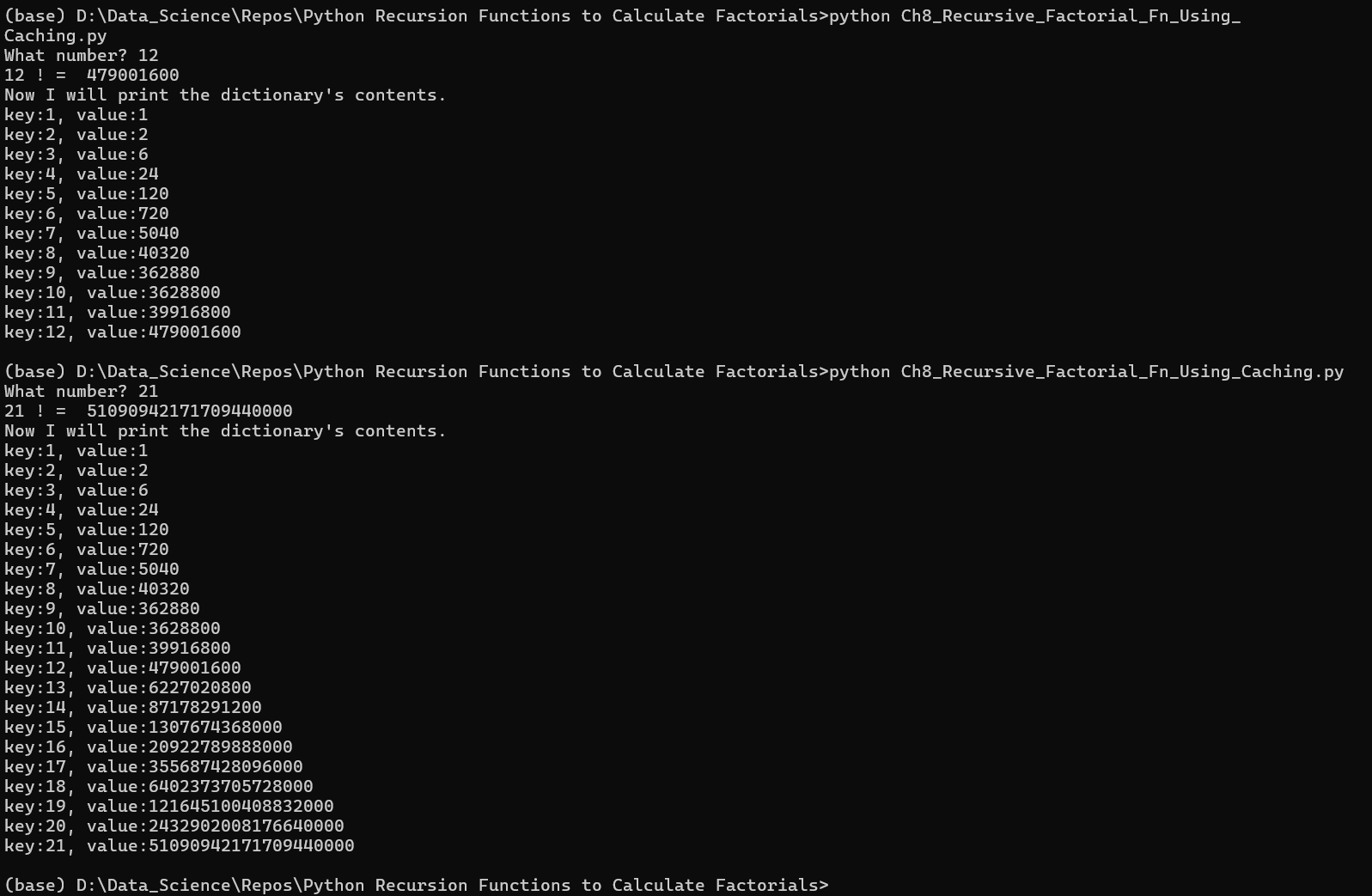Using a Python Dictionary to Cache Results of a Recursive Function

I used recursive functions to calculate factorials. I created my own dictionary to cache the results of successive calculations. #with caching, using my own dictionary cache={} def factorial(n): if n<=1: #this is the base case return 1 else: cache[n-1]=factorial(n-1) cache[n]=cache[n-1]*n #we don't get to this line until previous line has got to n=1 return cache[n] # ask user to input a number the factorial of which the user wishes to find num= int(input("What number? ")) print(num,'! = ',factorial(num)) # the recursive factorial function is called here print("Now I will print the dictionary's contents.") #print out the dictionary for key, value in cache.items(): print(f'key:{key}, value:{value}') Click on this image to increase its size and see the results of running the code twice.


